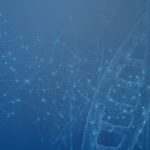Link to Pubmed [PMID] – 25658386
PLoS Comput. Biol. 2015 Feb;11(2):e1003969
Epigenetic regulation of the replication program during mammalian cell differentiation remains poorly understood. We performed an integrative analysis of eleven genome-wide epigenetic profiles at 100 kb resolution of Mean Replication Timing (MRT) data in six human cell lines. Compared to the organization in four chromatin states shared by the five somatic cell lines, embryonic stem cell (ESC) line H1 displays (i) a gene-poor but highly dynamic chromatin state (EC4) associated to histone variant H2AZ rather than a HP1-associated heterochromatin state (C4) and (ii) a mid-S accessible chromatin state with bivalent gene marks instead of a polycomb-repressed heterochromatin state. Plastic MRT regions (≲ 20% of the genome) are predominantly localized at the borders of U-shaped timing domains. Whereas somatic-specific U-domain borders are gene-dense GC-rich regions, 31.6% of H1-specific U-domain borders are early EC4 regions enriched in pluripotency transcription factors NANOG and OCT4 despite being GC poor and gene deserts. Silencing of these ESC-specific “master” replication initiation zones during differentiation corresponds to a loss of H2AZ and an enrichment in H3K9me3 mark characteristic of late replicating C4 heterochromatin. These results shed a new light on the epigenetically regulated global chromatin reorganization that underlies the loss of pluripotency and lineage commitment.

